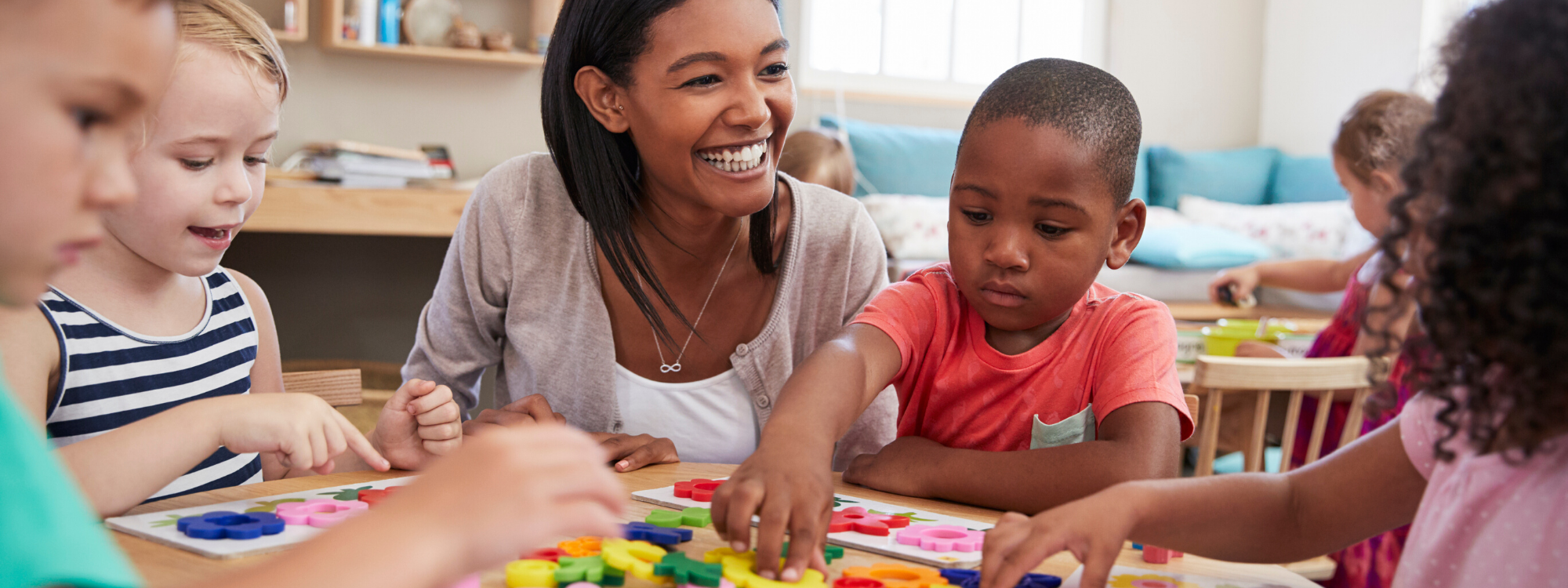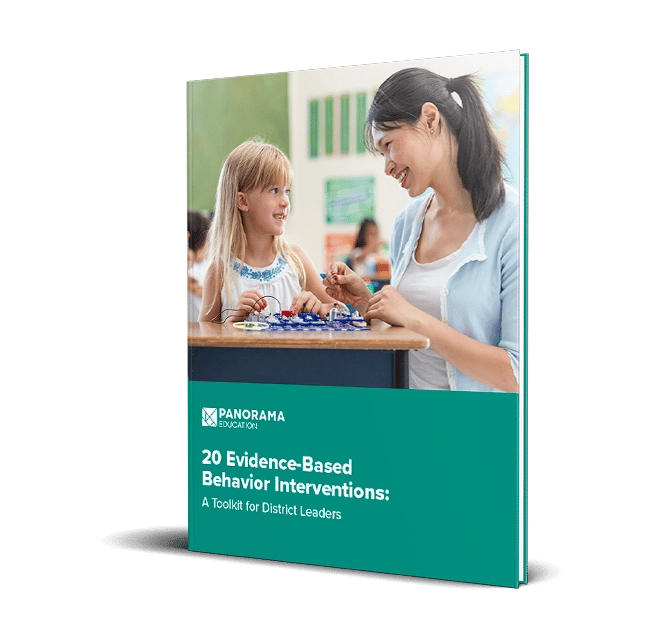As the school year progresses, creating positive learning environments continues to be top of mind for teachers and staff. A major part of creating engaging school environments involves promoting positive student behavior. One way to encourage students to model appropriate behaviors is by setting behavior expectations, which are guidelines for the general ways you would like students to act in your classroom.
When building the foundation of a positive classroom environment, it is important to:
- Establish classroom expectations.
- Explicitly teach students about those behavior expectations.
- Monitor and reinforce students for following expectations.
We’re outlining six steps teachers and staff can take to establish (and teach) behavior expectations.
Table of Contents
Establishing and Teaching Behavior Expectations
Promoting Behavior Expectations With Behavior-Specific Praise
|
Key Takeaways:
|
Download 20 Evidence-Based Behavior Interventions
Establishing and Teaching Behavior Expectations
Positive, collaborative behavior expectations form the foundation of an engaging learning environment. By following these six steps, you can develop classroom expectations that promote positive student behavior. These steps can be applied to high school, middle school, and elementary school settings.
Teaching behavior expectations doesn’t have to be limited to the classroom. Your teachers and PBIS team can also work to set school-wide behavior expectations—because student behavior matters from the classroom to the playground.
1. Get input from students
Developing expectations with input from your students gives them a sense of ownership, which motivates students to meet expectations. You can develop shared classroom rules through class discussions, student shares, or class votes.
Additionally, encourage students to create visuals for shared expectations. You can display these in your classroom so that students have a reminder of the classroom expectations they helped to develop.
2. Limit expectations to five or fewer
It’s best to keep your classroom expectations at a manageable amount so students don’t feel overwhelmed. Consider developing five behavior expectations for your classroom, with flexibility to modify them as the school year progresses and you—and your students—set new goals.
Additionally, you might establish expectations for specific learning activities or in certain learning environments. For example, your staff might set behavior expectations for good manners during school-wide presentations, or could set the expectation that students wash hands before lunch.
3. Keep it positive
Create behavior expectations that are phrased positively, stating what you want students to do rather than what you don’t want them to do. For example:
- “We will not use cell phones during class,” could be phrased as a positive behavior expectation as, “We will pay attention while others are speaking.”
- “We will not shout at others,” could instead be, “We will use our quiet voices during lunch.”
By focusing on positive classroom expectations, students will have a better idea of which actions to take to model appropriate behaviors.
4. Be simple and specific
Creating simple and specific behavior expectations is especially key for younger students. When students can easily understand what appropriate behaviors are expected of them, they are more likely to demonstrate those behaviors.
For example: Instead of saying “We will make sure our classroom is clean and organized so that we feel happy learning in this room,” you could say, “We will pick up after ourselves at the end of each day.” This phrasing is much more straightforward and specific.
5. Apply expectations to both students and educators
Classroom expectations should apply to both you and your students. This way, you can state expectations as “We will…” or “We are...” to clearly communicate that both you and students will work to meet those expectations.
Example classroom expectations could include:
- We will be safe and follow directions.
- We make our best effort.
- We are accountable for our own actions.
- We will be respectful, be responsible, and be kind.
6. Teach students how to be successful
Once you’ve drafted classroom expectations, you might notice that your expectations do not explicitly describe how to demonstrate those behaviors. For example, if one of your expectations is “We are safe and responsible,” it might not be clear to all students how to achieve this in your room each day.
Teaching all students exactly how to meet these expectations is key to success, because students enter your room with varying understanding of what these behaviors look like.
To teach your students how to be successful in meeting the classroom expectations:
- Explain each expectation. Explain what it means, and why it is important.
- Model each expectation. Using the “I do, we do, you do” instructional model, involve students in acting out how to demonstrate the behaviors defined in the expectations using role-playing scenarios.
- Practice each expectation. Provide opportunities for all students to practice the behaviors.
|
Frequently Asked Questions: 1. Why is it important to establish behavior expectations in the classroom? Establishing behavior expectations creates a positive and structured learning environment where students understand how to behave appropriately. Clear expectations help reduce disruptions, improve student engagement, and foster a sense of responsibility and accountability among students. 2. How many behavior expectations should I establish in my classroom? It's recommended to limit behavior expectations to five or fewer to keep them manageable for students. This ensures that expectations are clear and easy to remember, reducing the likelihood of confusion or overwhelm. 3. Should behavior expectations be phrased positively or negatively? Behavior expectations should be phrased positively to focus on desired behaviors rather than prohibitions. Positive phrasing helps students understand what is expected of them and promotes a more constructive approach to behavior management. 4. How can I ensure that behavior expectations are understood by all students? To ensure clarity, explain each behavior expectation in detail, providing examples and rationale for why it's important. Additionally, model each expectation for students and provide opportunities for them to practice and demonstrate understanding through role-playing activities. 5. What should I do if students struggle to meet behavior expectations? If students have difficulty meeting behavior expectations, revisit and reteach the expectations as needed. Offer additional support, provide feedback, and reinforce positive behaviors through praise and recognition. Consistency and reinforcement are key to helping students internalize and adhere to expectations over time. |
Promoting Behavior Expectations With Behavior-Specific Praise
Once you and your students have established shared classroom expectations, the next step is to provide positive, behavior-specific praise when students adhere to those expectations. By praising the expected behavior out loud, you reinforce the behavior not only for the student you praise, but also for all the students in the classroom who hear it.
Delivering regular, consistent, and positive feedback to students in the form of behavior-specific praise is a powerful Tier 1 intervention to increase student engagement, build positive relationships, and improve school climate.
Download and Share 20 Evidence-Based Behavior Interventions



![6 Steps to Establish Behavior Expectations [+ Downloadable Worksheets]](https://www.panoramaed.com/hubfs/iStock-887938150%20%281%29.jpg)



